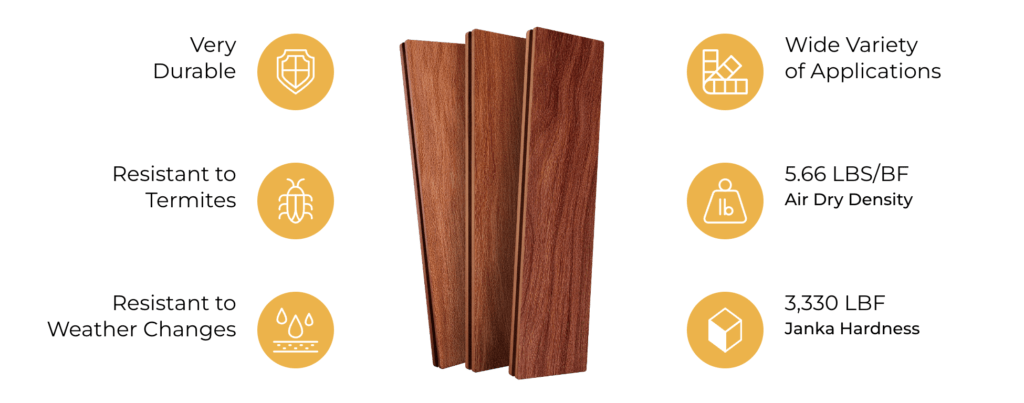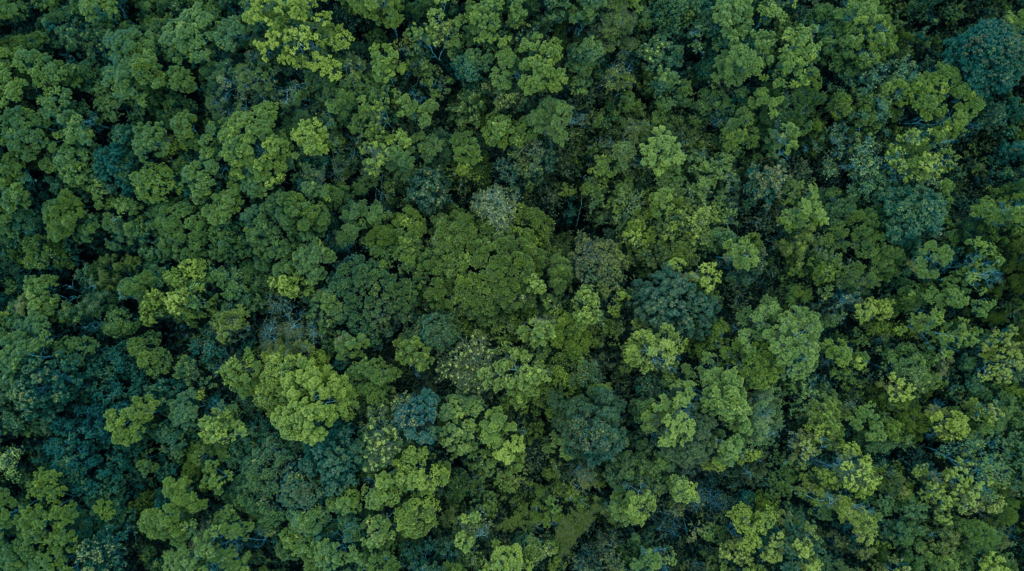Discovering the right material for your construction project is crucial for ensuring longevity, aesthetics, and overall satisfaction. Cumaru, often overshadowed by more commonly known woods, has emerged as a hidden gem in the realm of building materials.
This guide aims to unveil the remarkable qualities of Cumaru, and to illustrate why it’s an exceptional choice for both contractors and homeowners.
What is Cumaru?

Cumaru, also known as Brazilian Teak, is a remarkable exotic hardwood from the tropical rainforests of Central and South America. Its stunning aesthetic and exceptional durability make Cumaru an excellent choice for construction projects.
With a rich reddish-brown hue, it adds an elegant touch to any project. Boasting a Janka hardness rating of 3,540 lbs, Cumaru surpasses the strength of many other hardwoods, which makes it ideal for high-traffic areas.
Cumaru’s Unique Attributes

Durability and Aesthetics
Cumaru, renowned for its exceptional durability and aesthetic appeal, stands out in the hardwood category. Its physical properties, such as notable hardness measured by the Janka scale and fine to medium texture, contribute to its structural integrity and unique appearance. The wood’s dimensional stability ensures longevity and reliability, while its rich coloration and intriguing grain patterns add elegance to any project.
Versatility
Cumaru’s exceptional versatility makes it an ideal choice for various applications, both indoors and outdoors:
Outdoor Excellence
Cumaru excels in outdoor applications, due to its natural resistance to decay, weather changes, and termites. It’s an outstanding choice for decking, cladding, and outdoor structures, that offers durability and longevity with minimal maintenance. The wood’s density and hardness provide a strong and stable surface for high-traffic areas.
Architectural Beauty

When used for cladding, Cumaru is an attractive and robust solution. Its natural resistance to environmental elements ensures that the exterior of buildings remains beautiful and durable over time. The wood’s varied color palette and intriguing grain patterns add a touch of natural elegance to any architectural style, which makes it a versatile choice for both modern and traditional designs.
Sound and Heat Efficiency
Cumaru is a great insulator that works to keep both sound and heat loss at bay. When used as a cladding option, it is a fantastic material to maximize your thermal efficiency (not leaking heat/cold nor letting it in) as well as blocking sound, leaving homeowners with thermal and sonic comfort.
Indoor Sophistication

Cumaru’s adaptability extends indoors as well. It can be used for flooring and elegant furniture pieces by adding a touch of sophistication to interior spaces. The rich coloration and fine to medium texture of Cumaru contribute to a warm and inviting ambiance.
Cumaru’s versatility spans from outdoor durability to indoor sophistication, which makes it an outstanding choice for contractors and homeowners looking for a material that combines functionality with aesthetic appeal.
Comprehensive Comparison: Cumaru Against Other Premium Materials
Cumaru, a unique player in the hardwood market, offers a balance of qualities that sets it apart from alternatives like IPE and composite materials.
Ipe
While sharing similarities with IPE in terms of durability and aesthetic charm, Cumaru often comes forward as a more budget-friendly choice. This cost-effectiveness, coupled with its natural beauty and strength, makes it an attractive option for various construction projects. Even though IPE is a more durable and resistant wood, Cumaru is a great alternative. It can still last up to 50 years and will need only a small amount of maintenance, such as being oiled each year.
Composites
When pitted against synthetic materials like composites, Cumaru’s authentic wood appeal, with its distinct grain patterns and rich color variations, shines through. Its natural resistance to elements and long-term durability align it closely with synthetic options to make it a more sustainable, aesthetically pleasing, and practical choice for outdoor applications.
Effective Installation and Handling of Cumaru
Understanding Cumaru’s unique characteristics is crucial for a successful project. This remarkable hardwood, known for its density and hardness, demands specific tools and techniques to ensure precision and durability. Here’s what you need to know:
- Tool Selection: Cumaru’s density requires sharp tools designed for hardwoods, such as high-quality saw blades and drill bits, to achieve clean cuts and bore holes effectively.
- Pre-drilling for Fasteners: Given Cumaru’s hardness, pre-drilling is crucial when fastening it. This ensures a secure fit and prevents splitting, a common concern with less precise installation methods.
- Metal Interaction: Cumaru can react with certain metals that can potentially lead to staining. Select fasteners made from materials that won’t negatively interact with the wood in order to avoid this issue.
- Adhesives and Finishes: Cumaru’s oil-rich nature influences the choice of adhesives and finishes. Opt for adhesives compatible with oily woods to achieve optimal bonding. Select finishes that enhance the wood’s natural beauty while providing protection against the elements.
With these considerations in mind, installing Cumaru may present some challenges, but the result is well worth the effort. When handled with the proper tools and techniques, Cumaru can form the foundation of a sturdy and long-lasting structure that retains its aesthetic appeal over time.
Cumaru in Sustainable Building Practices

Cumaru’s contribution to sustainable building is notable. Sustainable harvesting and agroforestry, as well as an eco-friendly manufacturing process, make Cumaru a more environmentally friendly option compared to other materials.
With proper forest management, it is guaranteed that only 3-5 Cumaru trees will be harvested in an area as large as a football field. Not only will a small number of trees be extracted, but also the right ones. Only the oldest trees that have already been around for 50 years and are close to their death will be cut. In this way, we ensure opening the wood’s canopy, making room for young seedlings to receive more sunlight and fully develop, taking the place of the trees that were extracted. Additionally, during a tree’s lifetime, its only purpose is to absorb CO2 into its structure. This means that when we harvest mature trees at the right time, we are ensuring to trap all the carbon that was once absorbed, preventing it from being released back into the atmosphere when the tree dies.
Maintenance and Care of Cumaru Structures
Cumaru’s low maintenance needs add to its appeal. Regular cleaning and occasional oil treatments are sufficient to maintain its luster and prolong its life.
Discover the Excellence of Cumaru with Lumber Plus
Cumaru is not just a building material; it represents a wise choice for durability, beauty, and overall value for your construction projects. Embodying strength, resilience, and aesthetic elegance, it stands as a premier choice in building materials.
If you’re considering Cumaru for your next project, Lumber Plus offers a wide range of hardwoods and other high-quality building materials.
Contact us today for more information.






